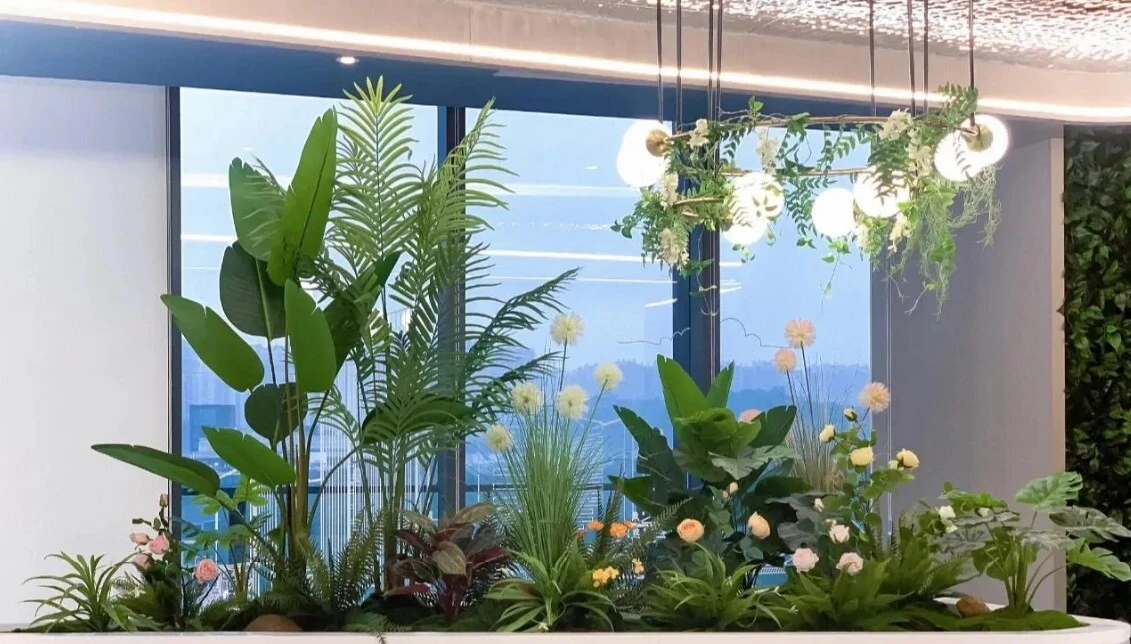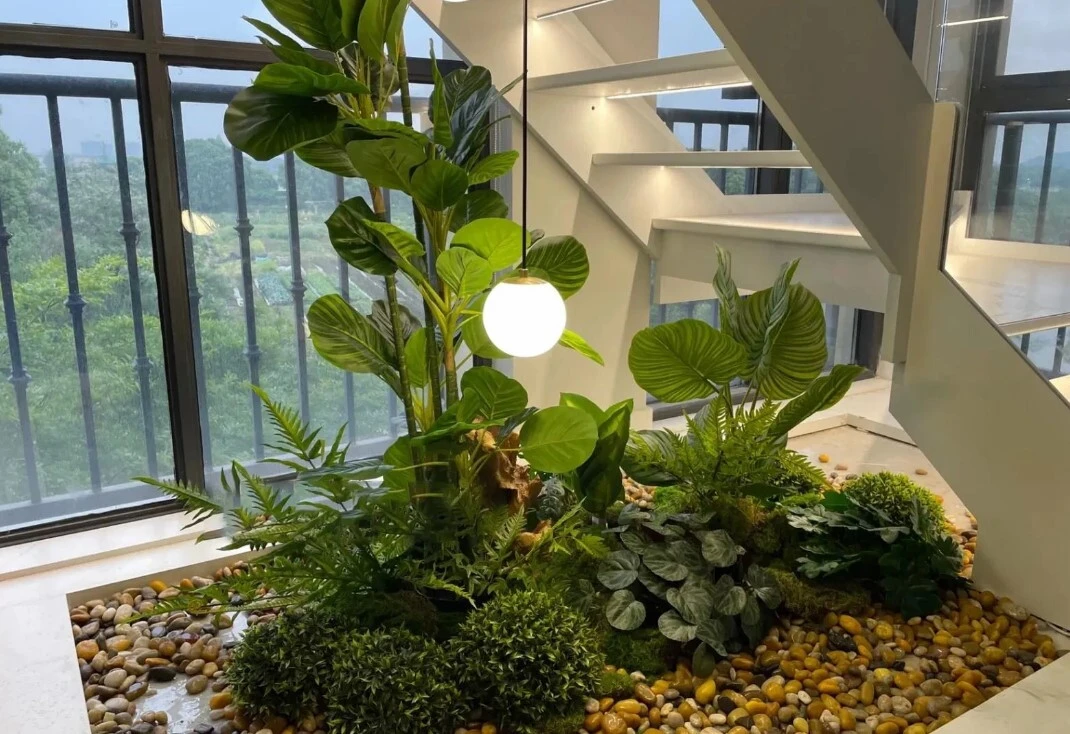Artificial plant landscaping offers numerous significant advantages, playing an increasingly crucial role in modern life and environmental design. Here are its key benefits:

Aesthetic Appeal and Decorative Functionality: Artificial plants mimic the appearance of real plants, adding greenery and vitality to spaces, and enhancing overall aesthetics and decorative effects. Whether indoors or outdoors, they serve as captivating focal points, adding natural beauty to environments.
Low Maintenance: Unlike real plants, artificial plants require no watering, fertilizing, or pruning, saving significant time and effort. This is a huge advantage for busy modern individuals or those lacking gardening knowledge.
Versatility: Artificial plants are not restricted by natural conditions such as sunlight, water, soil, or seasonality, allowing placement in various environments, including areas with insufficient light or where real plants cannot thrive. This makes them highly popular in indoor design, commercial spaces, offices, and exhibitions.
Durability: Artificial plants exhibit excellent durability and stability, maintaining vibrant colors and vivid forms for extended periods, resistant to fading or deformation. This ensures long-term landscape effects, reducing the frequency of replacement and maintenance.
Environmental Friendliness and Safety: Artificial plants eliminate the need for pesticides or fertilizers, thus being environmentally friendly and not releasing harmful substances. Additionally, they eliminate the allergy risks that real plants may pose, making them safer for allergy-prone individuals.
Creativity and Personalization: The design of artificial plant landscapes offers high flexibility and creativity, allowing customization based on personal preferences, space requirements, and overall style. From color, shape to size, various choices cater to personalized needs.

Overall, artificial plant landscaping plays an increasingly important role in modern life and environmental design with its beauty, practicality, and flexibility. Not only do they enhance the aesthetics and comfort of spaces, but they also save time and effort, meeting diverse personalized needs.

Aesthetic Appeal and Decorative Functionality: Artificial plants mimic the appearance of real plants, adding greenery and vitality to spaces, and enhancing overall aesthetics and decorative effects. Whether indoors or outdoors, they serve as captivating focal points, adding natural beauty to environments.
Low Maintenance: Unlike real plants, artificial plants require no watering, fertilizing, or pruning, saving significant time and effort. This is a huge advantage for busy modern individuals or those lacking gardening knowledge.
Versatility: Artificial plants are not restricted by natural conditions such as sunlight, water, soil, or seasonality, allowing placement in various environments, including areas with insufficient light or where real plants cannot thrive. This makes them highly popular in indoor design, commercial spaces, offices, and exhibitions.
Durability: Artificial plants exhibit excellent durability and stability, maintaining vibrant colors and vivid forms for extended periods, resistant to fading or deformation. This ensures long-term landscape effects, reducing the frequency of replacement and maintenance.
Environmental Friendliness and Safety: Artificial plants eliminate the need for pesticides or fertilizers, thus being environmentally friendly and not releasing harmful substances. Additionally, they eliminate the allergy risks that real plants may pose, making them safer for allergy-prone individuals.
Creativity and Personalization: The design of artificial plant landscapes offers high flexibility and creativity, allowing customization based on personal preferences, space requirements, and overall style. From color, shape to size, various choices cater to personalized needs.

Overall, artificial plant landscaping plays an increasingly important role in modern life and environmental design with its beauty, practicality, and flexibility. Not only do they enhance the aesthetics and comfort of spaces, but they also save time and effort, meeting diverse personalized needs.

